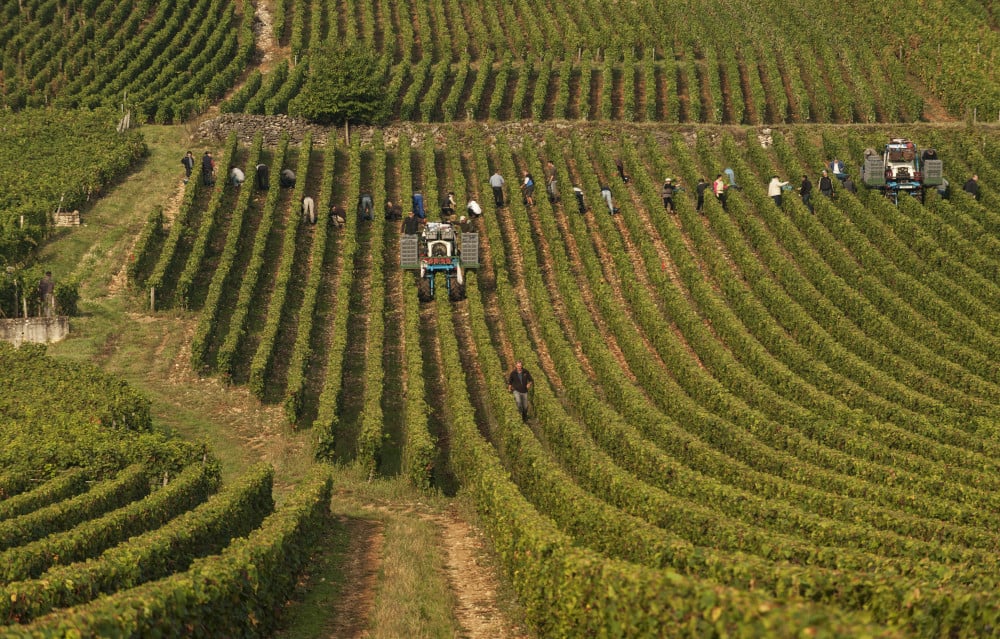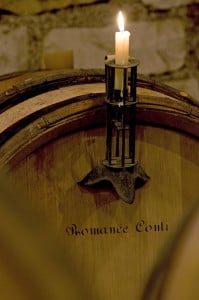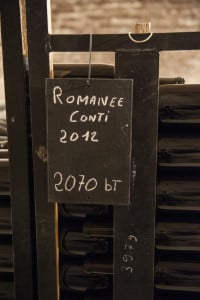Burgundy
Burgundy offers the crème de la crème of French wines. White wines that vibrate with liveliness or are so minerally and profound that you want to spend hours studying them. Or highly elegant reds that are complex yet delicate and seem destined to last an eternity.
The best wines in Burgundy
You can recognise Burgundy immediately on a map. This is because the wine-growing region extends in a striking lightning-bolt shape as a broad strip between Dijon in the north and Lyon in the south. The Chablis also belongs to it, so to speak, as a small enclave. The Chablis is located about 150 kilometres from Dijon and is therefore closer to the Côte des Bar in Champagne than to its own wine-growing area.
What also characterises Burgundy geographically is its impressive yet confusing fragmentation. In the region, which has a total vineyard area of 3,000 hectares, the principle of real division has applied for centuries when it comes to inheritance. All persons entitled to inherit receive exactly the same share. Over the centuries, the vineyards have literally been fragmented as a result. Today, it is quite common for 27 different vineyards to share a vineyard of only two hectares. In addition, not all vineyards are the same. Although the majority of the vineyards face south, very different qualities can still be produced in a vineyard. The best wines come from the middle, the less good ones from the foot of the vineyard. When you start looking at wines from Burgundy, this level of detail can be quite overwhelming at first.
The Burgundy is relatively small compared to bordeaux, the number of hectares amounts to about 20% of that of bordeaux.

The history of Burgundy wine
As early as Roman times, wine has been made in the Bourgogne. But it was only after the Middle Ages that the quality of wine making improved greatly. An important factor in this was the work of the monks, who had access to cool spaces in their monasteries and ensured that all their experiences were recorded in writing, like for example Dom Perignon. In this way, knowledge and experience were handed over to the next generations.
In later times, the vineyards would end up the hands of the nobility. But after the French Revolution, many of these landowners were forced to sell of their vineyards, transferring the ownership to the farmers. Subsequent generations of inheritance led to fragmentation of the vineyards, which is why nowadays the Bourgogne is characterised by a great diversification of the plots and vineyards. Gaining knowledge of Bourgogne wines is quite a challenge, because apart from knowing all about the vineyards themselves, you also need to find out who the winemaker is for that particular plot. One vineyard can have dozens of different owners, and by extension, winemakers.
This means that knowledge of Burgundy and its wines can be quite a challenge. Besides the different vineyards with their typical character, you also need to know the winemaker. A winemaker puts a decisive stamp on the final product, the wine in the bottle. The vineyard and the winemaker determine the quality and attractiveness of a Burgundy wine.
How did viticulture develop in Burgundy?
Without the Gauls and the Romans, who fought each other in Burgundy for over a thousand years from the 1st century BC, there would probably be no viticulture in the region at all. The Romans had reckoned with an easy march-through, but the Gauls made life so difficult for them that it came to a positional battle that lasted for centuries. For a long time, historians assumed that the Romans wanted to supply their troops with wine that did not have to be transported over long distances. And that they therefore planted the first vines in Burgundy. The first archaeological finds to provide definite proof of viticulture from the 2nd century onwards are, however, Gallic. Ultimately, it doesn't matter whether it was the Gauls or the Romans who started viticulture in Burgundy. After all, the wine back then tasted completely different from what we know and love today.
Viticulture in Burgundy reached its first peak in the 10th century. Welcome to the Early Middle Ages. At that time, the French nobility gave many excellent vineyards to various monastic orders such as the Benedictines and Cistercians. Simply because they themselves could not handle them properly. It was cheaper to buy the finished wines from the abbeys than to produce them themselves. The monks, on the other hand, did not stint. Not only did they meticulously lay out the vineyards, but they also conducted the first soil studies and carefully observed which grape varieties produced the best results in which locations, in order to learn from this and identify the ideal site-grape variety combinations.
They also built stone walls around many of their premium sites to protect the grapes from animals. These so-called clos are still among the best sites in Burgundy today. In short, the Benedictines and Cistercians shaped the Burgundian wine landscape. Except for one huge difference: until the late Middle Ages, the range of grape varieties was much more diverse.

Sub-regions, climate and soils in Burgundy
In general, Burgundy can be divided into four sub-regions. From north to south, these are: Chablis, Côte D'Or (Côte de Beaune and Côte de Nuits), Côte Chalonnaise and Mâconnais. Theoretically, Beaujolais could also be named as a fifth sub-region. However, it is practically independent. For this reason, we do not include it in this list. The Chablis (where only Chardonnay grows), the Côte Chalonnaise and the Mâconnais are individual regions, while the Côte d'Or is divided into four further sub-regions: Côte de Nuits and Hautes-Côtes de Nuits in the north and Côte de Beaune and Hautes-Côtes de Beaune in the south. Here, the most frequently cultivated grape variety is Pinot Noir.
This small-scale structure suggests that the climate and soils in Burgundy also vary greatly. In the north, the climate is rather cool and continental. Here, late frosts can pose a major problem, as can rain. In the south, there is a predominantly temperate continental climate, which is repeatedly shaken by uncomfortable north and west winds. The soils in Burgundy are very diverse and range from limestone and marl to granite and slate, as well as gravel and clay.
Which grapes are permitted in Burgundy?
If the grape varieties had not changed, then today in Burgundy you would mainly find the red grape Gamay. In the Middle Ages, it was planted frequently because it is so wonderfully uncomplicated to grow and produces wonderfully fruity wines. The monks may have been enthusiastic about Gamay – the Duke of Burgundy, Philip the Bold, was not. In his opinion, drinking Gamay wine was not beneficial. So, by decree on 31 July 1395, he banned the grape variety from Burgundy.
In doing so, Philip the Bold significantly changed the face of Burgundy. Instead of Gamay, the Duke only allowed Pinot Noir as a red grape variety. And a lot changed for the white grapes, too. Whereas in the Middle Ages there were still countless different grape varieties, since then Chardonnay has dominated. Here and there you can still find some Aligoté or Pinot Blanc. However, only Chardonnay and Pinot Noir are still permitted for the cru wines.

Are all Burgundy wines equally good?
This is where it gets complicated. In general, the quality of all wines from Burgundy is very high. However, it can vary from vintage to vintage, depending on the weather conditions. As almost everywhere in the world, there is a strict hierarchy of wines in Burgundy. The base is formed by the wines from the regional appellations. These wines are called Bourgogne Rouge or Bourgogne Blanc. The Crémant de Bourgogne. In total, there are 23 regional appellations in Burgundy, which account for 50 percent of the total wine production. These are followed by the municipal appellations, also known as village appellations. Meursault, for example, is a municipal appellation.
There are also 562 premier crus in Burgundy. That sounds like a lot, but the premiers crus account for just ten percent of the total production. Well-known Premiers Crus include Chambolle-Musigny, Puligny-Montrachet and Gevrey-Chambertin. The Grands Crus represent the top quality of Burgundy wines. There are only 34 Grands Crus in Burgundy, which produce only two per cent of all wines. Well-known Grands Crus include Clos de Vougeot, Echezeaux, Clos de la Roche and Chambertin.
What does a wine from Burgundy taste like?
With all the variety, you can perhaps already guess our answer. In terms of taste, Burgundy wines really cannot be categorised. Depending on the sub-region and appellation in which the grapes thrive, they can develop completely different aromas on the different soils of the vineyards.
While a Chardonnay from Chablis often has an almost radiant acidity, a Chardonnay from Meursault tends to be full-bodied and voluminous. The same applies to Pinot Noir. But what all the wines have in common is their tremendous elegance. In addition, the Grands Crus usually impress with an enormous ageing potential of ten or more years.
What food goes well with Burgundy wines
Whether it's Chardonnay or Pinot Noir, small wine or large plant, Burgundy wines are the perfect accompaniment to food in all situations. A Bourgogne Blanc is a fantastic everyday companion to pasta with a creamy sauce, while a Bourgogne Rouge goes very well with a spicy pizza. Fine fish and a Chardonnay from a Premier Cru go together just as well as a Grand Cru Pinot Noir and the legendary Bœuf bourguignon. There really are no limits to your creativity.
If you are ever unsure which Burgundy wine will go best with your planned menu, just contact us. We will be happy to advise you. In the meantime, we would like to recommend our diverse and carefully curated selection of the finest Bourgogne wines.
The appelations in Burgundy
To get an appellation in Burgundy, only the grape varieties chardonnay (white), aligote (white) and pinot noir (red) may be used.
Burgundy has the following subdivision in appellations:
- Appellation Bourgogne Contrôlée: the wine comes from Burgundy.
- Appellation <area or municipality> Contrôlée: the wine comes from a certain area or municipality of Burgundy. For example Appellation Puligny Montrachet Contrôlée: the wine comes from the municipality of Puligny Montrachet.
- Appellation <vineyard>Contrôlée: the wine comes from a special vineyard.
- Premier cru: the wine comes from a specific, very good, vineyard from Burgundy. On the label is next to Appellation <area or municipality> Contrôlée also premier cru on the label. For example: Appellation Puligny Montrachet Premier Cru Contrôlée: the wine comes from a specific vineyard from the municipality of Puligny Montrachet.
- Grand cru: the wine comes from one of the best vineyards in Burgundy.
The Grand Crus in Burgundy
The Law on The Appelation Controlees in Burgundy has been in place since 1937. The number of appelations is enormous. In the Cote D'Or alone, more than 100 designations of origin are distinguished. This includes 33 grand crus and 1271 lieux-dits or climats. Approximately 560 vineyards have the status of premier cru. The 100 appelations in the Cote D'Or can be found in 35 municipalities.
The difference in quality is huge. One cannot therefore simply compare one grand cru with another. The same goes for the Premier crus.
The Grand Crus are considered the best wines of Burgundy. These grand crus are:
The Burgundy Grand Crus, the best white wines
- Bâtard-Montrachet
- Bienvenues-Bâtard-Montrachet
- Chevalier-Montrachet
- Corton-Charlemagne
- Criots-Bâtard-Montrachet
- Montrachet
The Burgundy Grand Crus, the best red wines
- Bonnes-Mares
- Chambertin-Cos de Bèze
- Chapelle-Chambertin
- Chambertin
- Charlemagne
- Charmes-Chambertin
- Clos de la Roche
- Clos de Tart
- Clos de Vougeot
- Clos des Lambrays
- Clos Saint Denis
- Corton
- Échezeaux
- Grands Échezeaux
- Griotte-Chambertin
- La Grande Rue
- La Romanée
- La Tâche
- Latricières-Chambertin
- Mazis-Chambertin
- Mazoyères-Chambertin
- Musigny
- Richebourg
- Romanée-Conti
- Romanée-Saint-Vivant
- Ruchottes-Chambertin
Unfortunately, a vineyard does not say everything about the quality of the wine. The winemaker is ultimately decisive in this.
Some vineyards are a monopole. This means that the vineyard has only one owner. Examples include Domaine de la Romanee Conti La Tache, Lamarche Grande Rue and Domaine de la Romanee Conti Romanee Conti.
Wine producers

What are the best wine producers in Burgundy
There are actually too many to mention, but in general the following domains are leading:
- Domaine Leflaive
- Domaine Leroy
- Ramonet
- Roumier
- Liger Belair
- D'Auvenay
- Raveneau
- Dauvissat
- Coche Dury
- Domaine de la Romanee Conti
- J.F. Mugnier
- Dujac
- Meo Camuzet
- Ponsot
What are the most expensive wines from Burgundy?
The price of a wine is determined by the quality and, to an increasing extent, the rarity of the wine. Certainly from 2015 onwards, this trend has accelerated.
The most expensive wines from Burgundy come mainly from Domaine de la Romanee Conti, D'Auvenay, Coche Dury, Domaine Leroy, Liger Belair, but this list is certainly not exhaustive.






